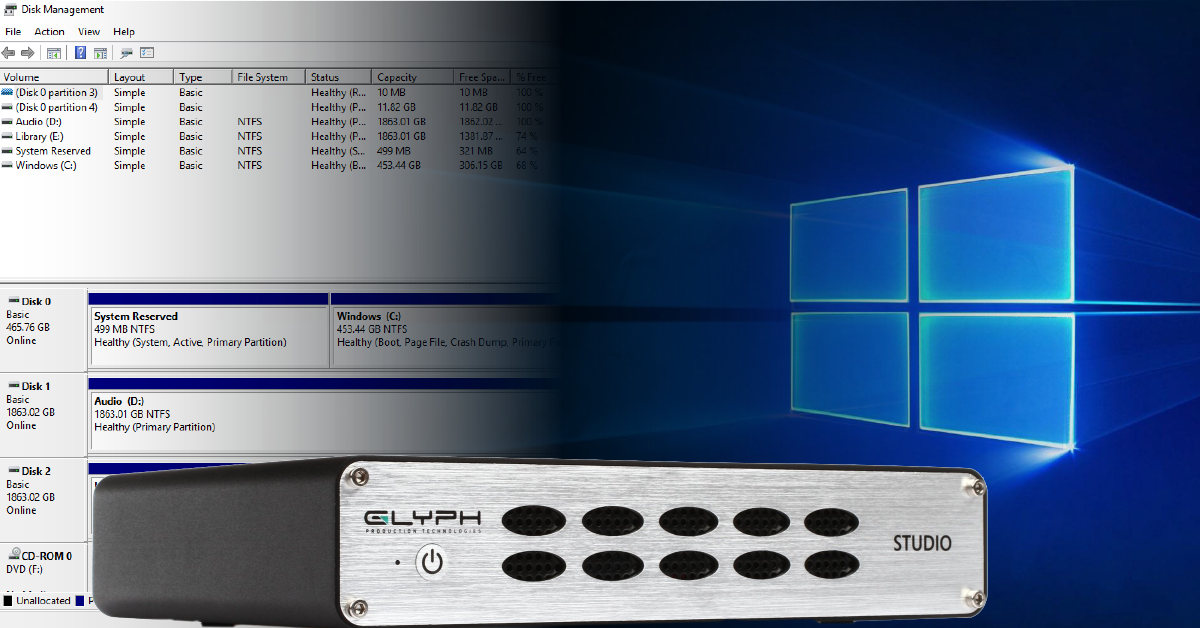

- #Partitioning external hard drive for windows and mac mac os
- #Partitioning external hard drive for windows and mac install
- #Partitioning external hard drive for windows and mac full
- #Partitioning external hard drive for windows and mac windows 10
And what if you make your Windows or swap file partitions too small? It's easy to underestimate the how large the swap file might grow. Your system performance will be optimized when the swap file is on the same partition as the operating system, because that mimimizes the movement of drive head. But everything I've read indicates just the opposite. Some people think that having a separate partition for the swap file will help with performance. Novice or casual users will probably not remember to change the target drive to D: or E: and the result will be a mishmash of programs installed on multiple partitions. And even if the installer does give you a choice, the C: drive is always the default. And if you blindly copy them to the D: drive, they may not work, due to Registry problems. They just plop themselves down on the C: drive.
#Partitioning external hard drive for windows and mac install
If the Registry gets whacked by a virus, or you re-install Windows, ALL of your software will have to be re-installed.Īnother problem with the "operating system on C: and programs on D:" idea is that some programs don't even ASK where you want to install them. But they're forgetting about the Windows Registry, which tells Windows where all the user-installed software resides on the hard drive. The rationale is usually along the lines that if your Windows operating system gets hosed by viruses or spyware, then you can simply re-install Windows and your programs will be safe on another partition. Some people go hog-wild with partitioning, and advise people to create one partition for the operating system, another for the Windows swap file, and still other partitions for installed software, music and photos. A terabyte is 1000 gigabytes, and a gigabyte is 1000 megabytes.

#Partitioning external hard drive for windows and mac mac os
Moderns versions of Windows, Mac OS and Linux can handle partitions of almost any size, even the multi-terabyte drives that are available on the market now. But the hardware and software to support large hard drives has been around for over a decade now, and these gyrations are no longer necessary. So a 10GB drive required five 2GB partitions, which would end up being the C:, D:, E:, F: and G: drives on a Windows computer.
#Partitioning external hard drive for windows and mac full
If you had a hard drive larger than 2GB, you needed multiple partitions to make use of the full capacity of the drive. Years ago, some hard drive controllers, as well as older versions of the Windows and Mac operating systems, could not accomodate a hard drive partition larger than 2 GB.

Unless you are running a dual-boot system, with one partition for Windows, and another for Linux or some other operating system, I recommend that you stick with one large partition. Click the only result, and you should now be looking at a window like this.In general, I disagree with the idea of having multiple partitions on a hard drive.

To get into Disk Management, click Start and type diskmgmt.msc into the search bar.
#Partitioning external hard drive for windows and mac windows 10
We’ll be using Windows 10 and Disk Management for this tutorial, but the process will behave in a similar fashion across previous versions of the OS. Whatever the reason may be, partitions are pretty easy to get set up on Windows with any storage medium in just a little bit of time. You may even want to put videos in one partition and photos and documents in another to speed up searches. If installing an operating system, you’ll need to partition part of a drive for the OS. You also may want an encrypted portion of a drive for confidential files. One is to use some of the space for general file storage and the rest for backups via the Windows Backup and Recovery Tool or Apple’s Time Machine. There are a few reasons one would want to partition an external drive. All drives need at least one partition to store data, usually pre set-up, but you can add more. Partitioning is the act of splitting a drive into pieces and assigning a filesystem.


 0 kommentar(er)
0 kommentar(er)
